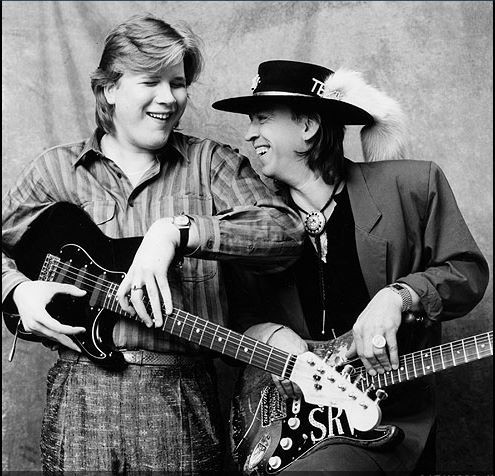It might seem obvious upon reflection, but the moniker “Blind Willie McTell” becomes particularly poignant when you realize the roaring ‘20’s bluesman was indeed blind. McTell penned and recorded ‘Statesboro Blues’ in 1927, a track that the Allman Brothers Band famously amplified in 1971 on their iconic “At Fillmore East” album. Bob Dylan himself tipped his hat to McTell in his 1983 song aptly titled ‘Blind Willie McTell,’ with the poignant refrain, “I know no one can sing the blues like Blind Willie McTell.” High praise from a generational voice, indeed. While witnessing McTell live was a dream lost to time, I was fortunate enough to experience another Blind Guitar Player, Jeff Healey, live in concert. His performance was nothing short of mesmerizing, an unforgettable testament to musical talent.
What truly captivates and impresses is the sheer ability to master a musical instrument, especially without the gift of sight. Perhaps the widespread recognition of geniuses like Ray Charles and Stevie Wonder has normalized the idea of blind pianists. Yet, the guitar? It seems almost unfathomable. However, focusing on the lack of vision in artists like Jeff Healey overshadows the central point: Healey was simply one of the most exceptional guitarists I’ve ever encountered. Period. No caveats needed.
Born in Toronto, Canada, Healey’s sight was taken by retinoblastoma, a rare eye cancer, before his first birthday. Receiving his first guitar at just three years old, he was initially taught conventional playing methods. However, he instinctively found a more comfortable and ultimately revolutionary approach: playing the guitar flat on his lap. This unorthodox technique, with his left hand positioned entirely over the fretboard, granted him unparalleled dexterity. He developed the extraordinary ability to fret notes with all five fingers and pull notes with remarkable strength from his entire hand. This resulted in an explosive and unique sound, described by Guitar Player magazine as featuring “astoundingly fluid bends and vibrato,” a dynamism previously unheard. Years later, at the renowned Toronto blues club Albert’s Hall in 1985, a 19-year-old Healey, already a sensation in Canada, was discovered by none other than Stevie Ray Vaughan. Vaughan, a guitarist I personally consider the greatest, later declared Healey the best guitar player in the world. That endorsement speaks volumes.
 Jeff Healey and Stevie Ray Vaughan, two legendary guitarists, performing together at CBC Studios in Toronto, 1987.
Jeff Healey and Stevie Ray Vaughan, two legendary guitarists, performing together at CBC Studios in Toronto, 1987.
For many, the introduction to Healey’s brilliance came with his debut album, 1988’s “See The Light.” Produced by the legendary Jimmy Iovine, the album showcased both Healey’s original compositions and electrifying covers of blues classics. Among them were ZZ Top’s ‘Blue Jean Blues’ and Freddie King’s ‘Hideaway,’ arguably the greatest blues instrumental ever. The record unequivocally displayed Healey’s breathtaking guitar skills, coupled with his rich, soulful baritone voice. It was, quite simply, a stunning and flawless debut that I, and many others, played incessantly. Over the next two decades, he released a string of exceptional albums, achieved mainstream success during the MTV era with hits like ‘Angel Eyes,’ ‘Confidence Man,’ ‘How Long Can A Man Be Strong,’ and ‘I Think I Love You Too Much’ (a collaboration with Mark Knopfler). He even made a memorable appearance as a musician in the cult classic Patrick Swayze film “Road House.”
My personal encounter with Healey occurred in 2004 at B.B. King’s music club in New York City’s Times Square. With “cabaret” style seating, it was first-come, first-served. My family and I arrived early, securing front-row, center-most seats, practically at the foot of the stage. Healey’s chair was positioned mere feet away, directly in front of me. It was a peculiar sensation, being so close to someone who couldn’t see me. At times, it felt almost like observing something private. Yet, dwelling on this aspect would completely miss the essence of the experience. His performance, judged purely on its musical merit, was spellbinding. It was so dynamic and improvisational that it evoked a deep emotional response. While sight may have been denied to Jeff Healey, he was undeniably blessed with extraordinary talent, and I felt incredibly fortunate to witness it firsthand. The video clip mentioned earlier perfectly captures the essence of his live performance. Introduced by saxophonist David Sanborn on the “Night Music” show, it features Healey, alongside guests Dr. John on keyboards and the phenomenal rhythm section of Marcus Miller and Omar Hakim, performing the title track from his debut album. Words struggle to fully convey the experience; watching it is truly believing it. It undeniably proves that one doesn’t need sight to truly “See The Light.”
¹His definitive rendition of ‘While My Guitar Gently Weeps’ from his 1990 album “Hell To Pay” featured the song’s writer, George Harrison, contributing backing guitar and vocals.
²Sadly, Jeff Healey passed away just four years later at the young age of 41, from a cancer unrelated to his childhood illness.
“The name is Dalton.”
